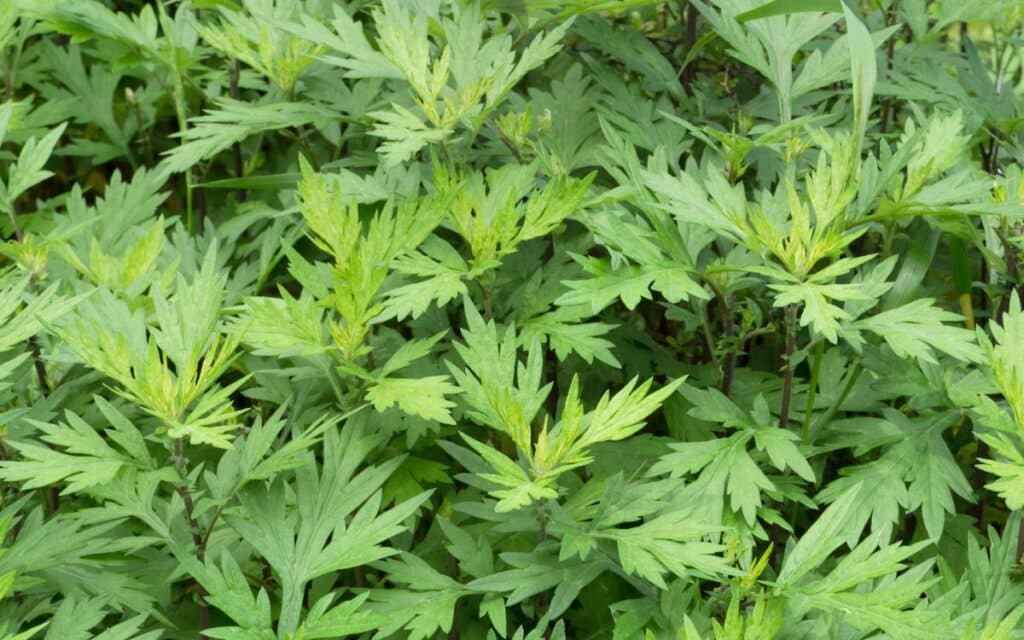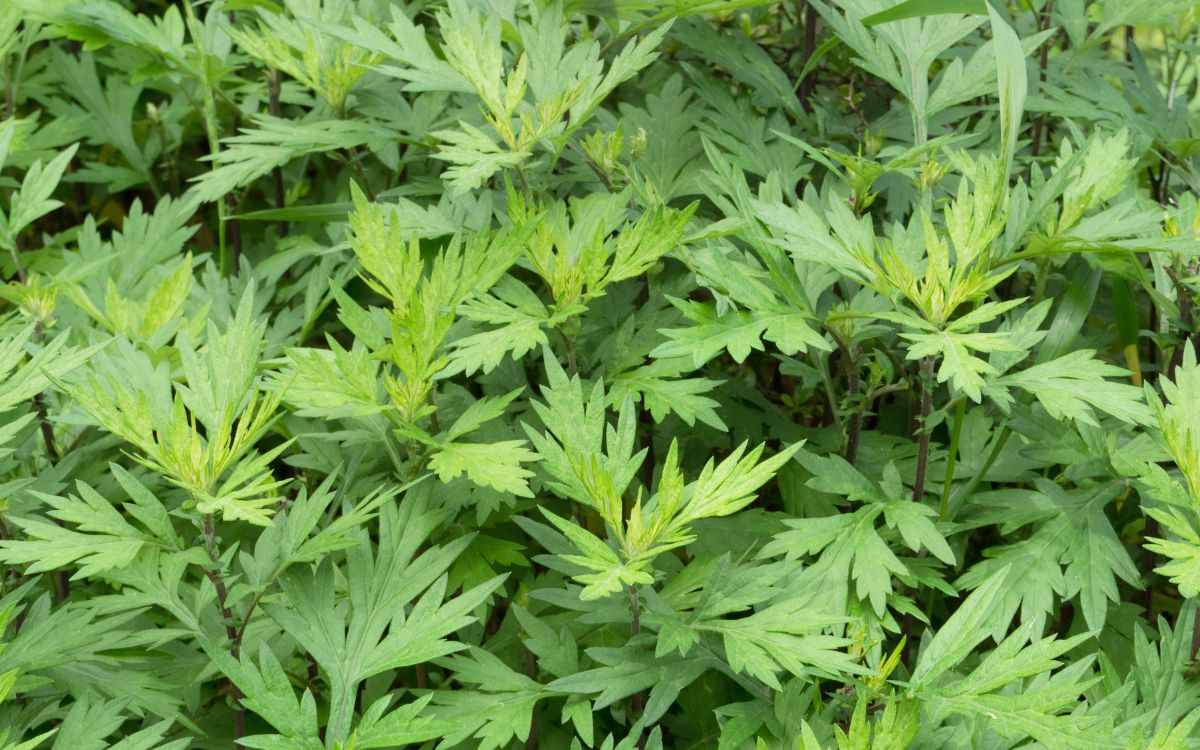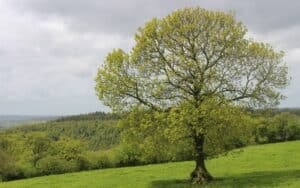Mugwort is a versatile herb with a long tradition in British and Irish folklore. It has often been used in various ways throughout the ages to protect against evil spirits, connect with deities, treat illnesses, aid in witchcraft practices and honour the dead. Let’s explore how Mugwort was used in each instance.

Folklore uses of Mugwort
As a Protector Against Evil Spirits
Mugwort was often hung in doorways, windows, or carried as a charm to repel malevolent spirits. The belief in its protective properties might have been due to its pungent and bitter aroma, thought to ward off evil entities. Additionally, the plant’s ability to cleanse and purify spaces could have contributed to its reputation as a protector.
In Association with the Goddess Áine
In Irish mythology, Mugwort was linked to the goddess Áine, who represented love, fertility, and healing. The plant might have been used in rituals or offerings dedicated to Áine, possibly in the form of brewed tea or as a burnt offering.
Traditional Medicine
In Scotland, Mugwort was employed in traditional medicine to address digestive issues and induce a calming effect on the mind and body. The essential oils in Mugwort are known to soothe the nervous system, and it was likely prepared as a herbal tea or poultice for medicinal use.
Relieving Menstrual Cramps in Wales
In Wales, Mugwort played a role in traditional medicine to treat menstrual cramps and was believed to have a protective effect on women. The plant’s antispasmodic and anti-inflammatory properties may have made it effective in alleviating menstrual discomfort. Its protective reputation could have been influenced by its use as a charm against evil spirits and witches.
Treatment for Epilepsy in England
In England, Mugwort was used in traditional medicine to treat epilepsy, likely in the form of herbal tea or other medicinal preparations. Its reputation for possessing magical properties might have originated from its use in pagan rituals and ceremonies.
Promoting Fertility in Irish Folklore
In Irish folklore, Mugwort was used to promote fertility and assist with childbirth. The herb’s emmenagogue properties, stimulating menstrual flow, may have been utilised to encourage fertility. Furthermore, its ability to relieve menstrual cramps could have been beneficial during childbirth.
Inducing Vivid Dreams
In British folklore, Mugwort was often used in a pillow to induce vivid dreams. This practice likely involved stuffing the herb’s leaves into pillows, allowing the sleeper to inhale its aroma throughout the night, potentially enhancing dream intensity and recall. The herb’s reputation as a dream-enhancing plant may have led to its frequent inclusion in witchcraft practices. It is believed to aid in lucid dreaming and astral projection, and its calming and protective properties may also contribute to its use in spells and rituals.
Warding off Witches in Scotland
In Scottish folklore, Mugwort was used to ward off witches. Its protective properties may have contributed to its use as a safeguard against witches and malevolent spirits. The herb might have been employed in spells and charms as a means of self-protection.
Honouring the Dead during Samhain
In Irish tradition, Mugwort is used to honour the deceased during the festival of Samhain, which marks the end of the harvest season and the beginning of winter. Samhain is believed to be a time when the veil between the living and the dead is thinnest. The plant might be used during this festival in various ways, including in offerings to the dead, to anoint ceremonial tools, or as incense in rituals to honour and connect with departed spirits.
Tell us your thoughts about this very special plant in the comments section below!







